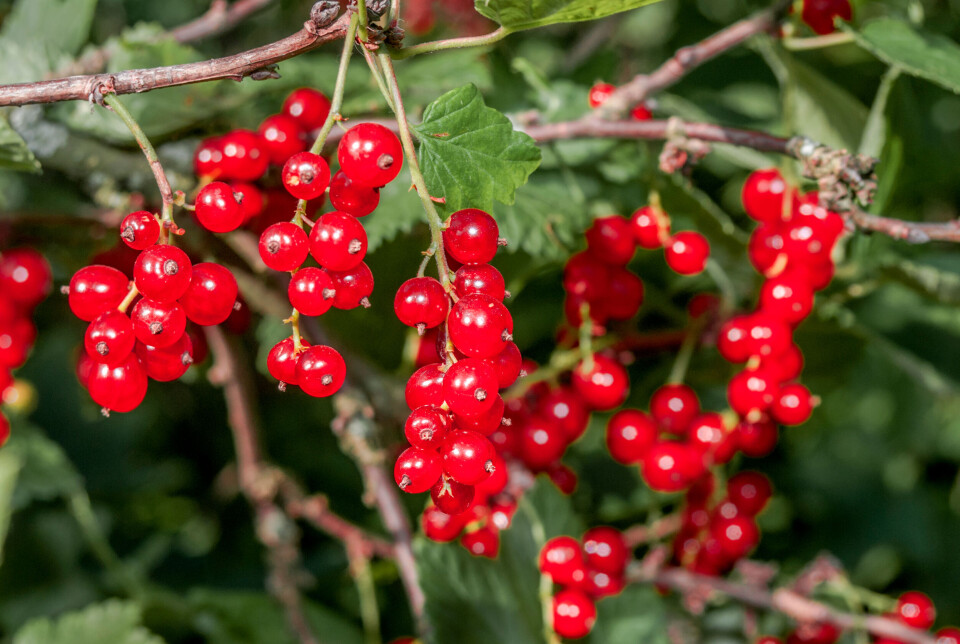-
What you should do to your garden in France in spring
Weeding, pruning, sowing, preparing the lawn…here is how to welcome sunnier days
-
Now is the time for people in France to ‘scarify’ their lawn
The practice, which should be done twice a year, enables the grass to thrive
-
Garden clearing obligations to be extended in south of France
Owners who fail to clear undergrowth face fines
How to grow redcurrants in your French garden
Used to make luxury jam ‘caviar de Lorraine’, redcurrants can thrive anywhere in France

You know those little cravings you develop, without even realising it?
One of mine (seeded during youthful days in Germany) is a July breakfast of redcurrants, sprinkled on a good quality muesli.
But I cannot easily buy fresh redcurrants in my corner of Lorraine – neither are young bushes of redcurrants readily available for garden planting in the spring.
Redcurrants not as strong as blackcurrants
I had one bush of redcurrant when I first arrived in my garden, but my hardwood cuttings, taken in late November just after leaf fall, were much less successful than the blackcurrant cuttings, since redcurrants are not as strong-growing.
In fact, the two are different species.
Blackcurrants being Ribes nigrum and redcurrants, Ribes rubrum, while white- and pink-berried plants are ‘sports’ (naturally occurring varieties) of the redcurrant.
Blackcurrants are not just stronger growing, but stronger smelling.
Identify redcurrants
When you are carrying out your winter prune, you really don’t want to prune your redcurrants nearly as hard as you would a blackcurrant: so, if you’ve muddled your plants, a useful trick is to rub the stems and dormant buds.
If this produces a familiar strong whiff, the plant is a blackcurrant.
French do love redcurrants
Since we are drowning in blackcurrants in this part of France – probably due to another little craving that involves adding a large splosh of crème de cassis to a good white Burgundy or Crémant – I came to the conclusion early on that the French were not fond of redcurrants.
I could not have been more wrong and have since discovered ‘caviar de Bar-le-Duc’ or ‘caviar de Lorraine’, a luxury jam concocted from redcurrants that was treasured throughout France as far back as the fifteenth and sixteenth centuries.
Sunshine in a jar
The town of Bar-le-Duc, birthplace of Marie de Guise (mother to Mary Queen of Scots) has specialised in its production since the fourteenth century, although there is only one family company in the twenty-first century that still produces it: ‘Maison Dutriez’
Back in the day, this luscious jam in its little crystal jar was a treasured and expensive gift that could buy you the patronage or protection of an important personage.
Mary Queen of Scots, who tried it while travelling with her first husband, Francis II, and pronounced it ‘a ray of sunshine in a jar’.
More recently it was said to be Alfred Hitchcock’s breakfast jam of choice.
Bar-le-Duc’s secret?
A fiddly job
For centuries, teams of women (known locally as ‘épépineuses’) have been employed to remove the redcurrant seeds with the sharpened base of a goose feather, inserted through the point at which the stem joins the fruit.
And they unbelievably still do this: five épépineuses for a 500-kilo crop of currants were employed by Maison Dutriez as recently as 2010!
Good with game
I now understand that redcurrants are an ancient and treasured part of French cuisine – chefs use them as accompaniments to all manner of dishes, especially stronger tasting, ‘gamey’, meats and pâtés, and they are perfect in summer ‘clafoutis’.
But I still find their status as ‘runner-up’ in garden popularity to the blackcurrant a little puzzling.
Many ways to grow redcurrants
As garden plants they are eminently versatile – there’s virtually no other soft fruit that will produce copiously in shade or against a north-facing wall, although it should be said that plants grown in light shade produce less sweet fruit.
You could even grow them as cordons against a north wall, in much the same way as you would apples. And, since redcurrants are less strong-growing than blackcurrants, they would make an ideal container specimen for a balcony, as long as fed, mulched and watered thoroughly.
As with any soft fruit, the time to pay closest attention to watering is when the fruit have formed.
Suggested varieties
For the original red type with the sour bite that makes your redcurrant the perfect accompaniment to savoury dishes, try varieties ‘Rovada’ (late July, with large fruits and an excellent flavour), ‘Jonkheer van Tets’ (early July, with a name that reflects the Netherlands’ place as the cradle of redcurrant breeding from the fifteenth century), and more modern ‘Lisette’ (early July, very high yield).
Whitecurrants and the rather trendy pink-berried varieties are much sweeter, and more useful for making the kind of jams that Hitchcock enjoyed: try ‘Versailles Blanche’, ‘Gloire de Sablons’ (pink fruit) and ‘White Pearl’.
Pruning tips
The fruit is borne on old wood and plants are normally grown as a goblet shape, to produce a network of fruit-bearing spurs, as you would for a cordon or espalier apple, while allowing for removal of very old, less productive fruiting branches.
Prune in late February to early March, removing the standard three: diseased, dead and crossing branches.
Then prune back the main framework branches by up to a third, finishing by cutting the laterals arising from these back to about two buds.
Since one established plant can provide up to 4.5 kilos of fruit (enough for at least one jar of ‘caviar de Bar’) make sure to plant your own ‘ray of sunshine’ this summer!
Got a question for Cathy? Email her at editor@connexionfrance.com
Related articles
France bans pesticide use in more places, including private residences
Gardening in France: All ages learn about ecology together in Nice
Five drought management tips for gardens from a French plant expert
























